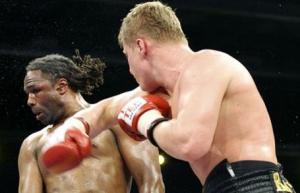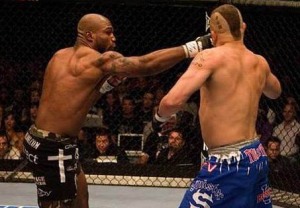Striking in Combination
It is no surprise that you can’t just throw a punch randomly and expect to hit a skilled opponent. Of course those one shot knockouts have their place and can be deadly if you catch the opponent by surprise. But realistically you can’t rely on that in every fight.
Combination strikes can be used to strike much more effectively. By stringing together certain punches, and not even necessarily landing all the strikes, you can put yourself in a better position for the next hit and connect clean. This also allows you to generate more power and be more agile in the ring and be less able to be hit by flowing from strike to strike
Body Shot Combinations
Combination punches can really help to open up the body for strikes. This also helps because when striking the body you are in close and vulnerable. In addition to this, by setting up the opponent for the body shots with other punches first you can put the opponent in the worst possible position for him for the strike you are about to throw.
By throwing punches at the opponent’s head or face you can make him have to honor your strikes and block. This is the general idea behind the set up for the body strikes because it takes the opponent’s arms away from his ribs.
By striking in succession you can flow with the strikes to load up and generate more power for the final blow at the end of the combination. This can especially be seen in the overhand right combination in the video below. Not only does it put the opponent in a bad spot to strike himself or avoid a strike but it naturally swings your body into the perfect load up for a powerful body hook.
Multi-Strike Combinations
The body shot combinations shown above consisted of two strike combinations. However using many strikes in combination can serve to really keep the opponent on his heels. Although more practice and know how is also needed to know how to flow to what punch next. Not every strike has to be a knockout punch either. In MMA even quick, less powerful, strikes can do good damage and with the volume of punches in the combination there is a good chance to get the upper hand on your opponent.
However by striking in fluid combinations like this you can generate a lot of power for your final shot. A quick strike can stun the opponent long enough to follow up with a power strike for a knockout blow. Depending on how many strikes you decide to throw this can be a very good depiction of the saying, “the best defense is a good offense”.
Combinations With Kicks
Striking combinations do not always have to exclusively consist of punches. Combinations that include kicks can be tremendously effective as well. Strikes to the face can get the opponents arms to block high as well and leave the opponent’s body open for quick powerful kicks. Also a kick can be used to open up a striking combination to stun the opponent before moving in for close range punches, elbows, or knees. For some examples and explanations of striking combinations including kicks CLICK HERE
Or just watch Anderson Silva perform a quick kick combination of his.
Final Word
My motto for striking combinations is “work smart not hard”. You could try and go out there and brute your way through a striking fight. However if you want to pick the opponent apart and not give him opportunities to strike back using effective striking combinations is key.
There are a lot of combinations out there to learn that are great for specific fighters because the combinations suit a particular fighter’s style. However there is no substitute for some good old trial and error and practice in the ring. You know your own strengths and weaknesses and what combinations feel right, and with enough practice you could start to develop some combinations of your own.






